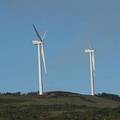 為了慶祝發現加拉巴哥群島500週年,厄瓜多爾的總統葛雷亞(Rafael Correa)於18日宣佈,2015年加拉巴哥群島將完全停止使用石油。
為了慶祝發現加拉巴哥群島500週年,厄瓜多爾的總統葛雷亞(Rafael Correa)於18日宣佈,2015年加拉巴哥群島將完全停止使用石油。
這項行動是由聖克力托保風力計畫(San Cristobal Wind Project)所領軍,該計畫在聖克力托保島鄰近El Progresso鎮設立了3座風力發電機。
這座風力發電廠座落於曾發生加拉巴哥群島史上最嚴重的原油外洩的島上,這次事件起因於2001年1月16日1艘名為「潔西卡」的油輪擱淺於Puerto Baquerizo Moreno的港口入口。
這些風力機可以產生240萬瓦特的電力,相當於該島二分之一的柴油進口量,同時也為了將來全面供給可再生能源給5個小島上的3萬居民鋪下基礎。
這些風力渦輪於去年10月開始供電至聖克力托保,共同參與此計畫的各方代表將會於3月18日正式舉行落成典禮。
此系統在10到12月的強風期間可以滿足60到80%的電力需求。
聖克力托保風力計畫是一個由厄瓜多爾政府、聯合國發展計畫署和九家G8國家的電力公司(或稱e8)的大型國際性合作計畫。
這個計畫的主要目標就是減少因為輸送石油到島上而造成原油外洩的機會,減低空氣污染以及因為燃燒石油產生的溫室氣體,同時保育該區特有的生物多樣性。
更宏觀地理解,這項計畫是多方合作減輕全球氣候變遷的成功案例,同時也是一個小規模可再生能源的生產、配送到偏遠地區的活教材。
此計畫的領導人羅菲曼(Paul Loeffelman)表示,為了解決財務和環境的疑慮,這項長時間的研究其實起源於對加拉巴哥海燕的觀察研究,加拉巴哥海燕是一種棲息在數個鄰近小島的海鳥,是6種加拉巴哥群島所產的海鳥之一,長尾的加拉巴哥海燕是被世界自然保育聯盟(IUCN)列為極度瀕臨絕種的動物。
鳥類研習委員會表示,雖然風力發電機對於海燕並無造成威脅,但仍有些鳥會因為飛進葉片轉動半徑致死,該委員會因此要求著手控制老鼠數量以及海燕飛行路線的長期研究,來決定是否風力渦輪可以在築巢期的夜間照常運轉。
因為用風力取代柴油發電,此計畫可以獲得減排認證額度,根據EOLICSA公司計畫經理人文特米拉(Luis Vintimilla)表示,成立該公司即是為了經營這個計畫,要以風力取代加拉巴哥所有的柴油發電是不可能的,他表示「然而,未來的計畫建議可以將目前使用的柴油改換為更環保的燃料。」
To celebrate the 500th anniversary of the Galapagos' Islands discovery, Ecuador's President Rafael Correa Monday launched a program to end the use of fossil fuels on the Galapagos by 2015.
The initiative is led by the San Cristobal Wind Project, which erected three wind turbines near the town of El Progresso on San Cristobal Island.
The wind farm is on the island that suffered the worst oil spill in the history of the Galapagos - the spill resulting from the grounding of the tanker "Jessica" at the entrance to the harbor at Puerto Baquerizo Moreno on January 16, 2001.
The turbines are generating 2.4 megawatts of power, enough to halve the island's diesel fuel imports and pave the way for further renewable energy development to supply the 30,000 residents of the Galapagos archipelago's five inhabited islands.
The turbines started supplying power to San Cristobal last October. Project partners will formally dedicate the wind turbines at a celebration in the Galapagos on March 18.
The system will meet 60 to 80 percent of electrical demand during the windy months of October, November and December.
The San Cristobal Wind Project is an international partnership between the government of Ecuador, the United Nations Development Program and nine of the world's largest electricity companies from G8 countries - known as the e8.
The project's primary objectives are to reduce the risk of oil spills associated with the transport and delivery of fuel to the island; reduce air pollution and greenhouse gases caused by burning fossil fuels; and contribute to the protection of the region's unique biodiversity.
On a larger scale, the project is an example of multilateral collaboration for climate change mitigation and a showcase for the global promotion of small-scale renewable energy power generation and distribution systems in remote areas.
AEP project team leader Paul Loeffelman says the lengthy feasibility study undertaken to address institutional, financial and environmental questions resulted from of monitoring and studies of the Galapagos petrel, a sea bird that nests on several of the islands. One of the six endemic marine birds of the Galapagos archipelago, the long-winged Galapagos petrel is listed as Critically Endangered by the IUCN-World Conservation Union.
A Bird Review committee concluded that although the turbines presented no major threat to the survival of the petrel, some of the birds were being killed when they flew into transmission lines. The committee also called for a rat control program and a long-term study of petrel flight patterns to determine whether the turbines can operate at night during the nesting season without negative impacts.
The project will receive certified emission reduction credits for the diesel electricity generation replaced by the wind turbines. According to project manager Luis Vintimilla of EOLICSA, the company established to operate the project, it is not possible to replace all diesel generation on the Galapagos with wind power. He said,”However, it is recommended that future work be done on projects to substitute the diesel currently used with a more environmentally friendly fuel."
全文及圖片詳見:ENS





